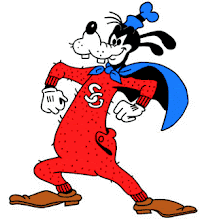 I'm a long-time fan of the pulp hero The Shadow, and actually have a fairly decent collection of vintage pulp magazines, radio shows in various formats (vinyl records, cassettes, CDs, mp3s, etc.,...),.....and comics.
I'm a long-time fan of the pulp hero The Shadow, and actually have a fairly decent collection of vintage pulp magazines, radio shows in various formats (vinyl records, cassettes, CDs, mp3s, etc.,...),.....and comics.Now...if I'm reading Lamont Cranston's exploits via the funnybook page, I've found it hard to beat DC Comics' 1970s run on the character written by Denny O'Neil and illustrated by Mike Kaluta (and later Frank Robbins). As a matter of fact, I'm constantly citing it as quite possibly one of my favorite comic book series runs of all time, and certainly one of the best attempts at bringing the character to the comic book page. Though, I will admit that my admiration for all things Howard Chaykin allows me to absolutely love his 1980s re-imagining of the character in a contemporary setting...alot of purists don't, but to each their own, eh?
And, then....there's this thing from Archie Comics published in the 1960s. For years, I'd heard fellow fans speak of it, and constantly seeing reference to it in various magazines devoted to the hobby as one of the worst examples of cashing in on the superhero craze of the 1960s...well, it made me curious. First of all, they make Cranston the picture of the Germanic dream....blond haired and blue eyed. And they ditch the (still incredibly cool) black cloak and fedora for a standard issue green and blue superhero union suit...this is definitely not how I'd always pictured the character.
Well....as luck would have it, I actually ran across a complete run of this series at a local comics shop a few years back...and actually got the books for a steal (they were having a Silver Age back issue sale). I figured for 20 bucks, it'd be worth a good laugh....
And now...I share my pain with you, Faithful Downloader.
The books actually aren't that bad, though....it shares more in spirit with the more light hearted portrayal of Cranston from the radio show, with a few typical 1960s tweaks to the character....such as revamping Shiwan Khan as a cliched Red China/Southeast Asia type commie menace....which when you think of it was that decade's version of the 1920s "yellow peril" villains that the character was originally inspired by.
I'm offering the downloads in various formats this time around, and will have all the links up as soon as I get them uploaded....
Download Links:
CBR bundle (Hosted By Megaupload)
Scan Bundle- COMING SOON










